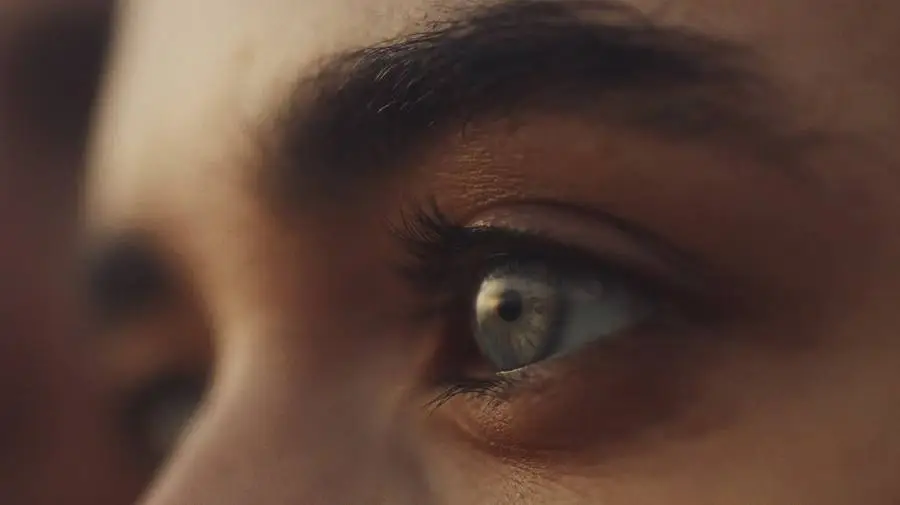The composition of a film refers to what is included in the frame and its arrangement. Although it may seem simple, a viewer’s appreciation can vary considerably depending on the framing. In this article, we’ll review eight strategies you can follow to ensure your films have outstanding composition. These steps can be applied with any camera, from a DSLR to a smartphone.
The Rule of Thirds
The first step in achieving an impressive composition is the rule of thirds. This technique, widely recognized in film, has been scientifically proven to be attractive to the viewer’s eye. The rule of thirds holds that our eyes are drawn to the four intersecting points of the frame, not the direct center. By placing your subject at one of these intersection points, your image will look much more attractive and cinematic. Watch any Hollywood movie and you’ll notice that the main subjects are almost always at one of these intersection points.
Center of the Frame
Subjects with authority should be in the center of the frame. You can place your subject in the center of the frame if they are lecturing or have more authority. In this way, they become the main subject to be heard and gain more authority in whatever they are discussing. However, it would be attractive to place your subject in the rule of thirds for landscapes or horizons if they have authority and are not looking directly at the camera.
Balance in Framing
Another important step in achieving a great composition is balance in the framing. Having one side of the frame heavier than the other can make the audience feel that something is wrong, even if they don’t know what is wrong. To achieve balance, you can move a frame or add something like a lamp to balance the image. It doesn’t have to be something huge, and balance can be achieved vertically, horizontally or diagonally.
Use of Direction Lines
Leading lines are a compositional technique that helps direct the viewer’s eye through the frame. You can include curves, diagonal lines, shapes that point in the direction of the subject, or even people and objects moving in that direction. These lines can also be used to accentuate the depth and distance of the image.
Depth
Having different planes of focus within the frame can give a greater sense of depth and dimension to your shot. Foreground, middle ground and background refer to the different distances of the elements in the frame and how they relate to the subject. For example, using foreground elements such as leaves or branches can add depth to a nature scene, while in architectural photography, having a subject in the foreground and a large building in the background can create a sense of depth.
Negative Space
Negative space refers to the empty space in your frame. It is an important element that can be used to frame your subject, provide balance and create an overall composition. It can be used to separate the talent from the background, to give them room to breathe, and to create a sense of simplicity. Interview style videos typically use two types of negative space:
- “Headroom”: the space between the top of the talent’s head and the boundary of the frame. There is always a small space left, called “headroom”.
- “Room to look”: when a talent is placed on one side of the frame, for example looking to the right, we often want to leave 2/3 of the frame for the talent to look in. We give him breathing room or “space to look”.
Symmetry
Symmetry in patterns and textures can add visual interest to your shot and make it more appealing to the viewer. This can be the repetition of shapes or lines, or the texture of a surface. When shooting a talent, placing them in the center of repeating patterns such as symmetrical buildings in the background, symmetrical lights in the background or any other symmetrical framing would create a cinematic effect. These elements can be used to create a sense of depth or to draw the viewer’s attention to a specific area of the frame.
Movement
Your film could use movement to add dynamism, focus the audience’s attention or express the passage of time. This could be captured using pans, tracking shots, zooms, or even simply moving subjects in the frame. The use of blurred objects in the frame, such as a car passing in the distance or a person walking down a crowded street, can also create a cinematic effect, combined, for example, with motion blur.
Conclusion
In conclusion, composition is a crucial aspect of filmmaking that can greatly influence the appeal and cinematic quality of your shots. By incorporating the rule of thirds, balance, leading lines, different focus planes, negative space, patterns and textures, and movement into your composition, you can elevate your shots to new heights and create a more engaging and visually stunning film. Remember to practice and experiment with these techniques, and don’t be afraid to break the rules to create something truly unique.
If you are interested in learning more about video production, we invite you to explore the services offered by SayIt. You can also contact us for any questions or to discuss your video production needs.




Leave a Reply